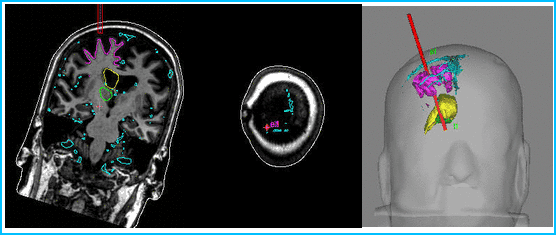Yuan Liu, Peter E. Konrad, Joseph S. Neimat, Stephen B. Tatter, Hong Yu, Ryan D. Datteri, Bennett A. Landman, Jack H. Noble, Srivatsan Pallavaram, Benoit M. Dawant, and Pierre-François D’Haese
Vanderbilt University, Wake Forest University & Stanford University, Volume 61, Issue 9, Page: 2479-2487
Deep brain stimulation, which is used to treat various neurological disorders, involves implanting a permanent electrode into precise targets deep in the brain. Reaching these targets safely is difficult because surgeons have to plan trajectories that avoid critical structures such as blood vessels and reach targets at angles within specific angles. A number of systems have been proposed to assist surgeons in this task. These typically involve formulating constraints as cost terms, weighting them by surgical importance, and searching for optimal trajectories, in which constraints and their weights reflect local practice. Assessing the broad clinical applicability and usefulness of these systems is challenging because of the lack of ground truth and clear consensus on an optimal approach among surgeons. It is thus not known whether or not a system developed and tested at one institution could be used at another one. In this work, we present both such a system and the results of a study we have conducted to test the hypothesis that a system developed to reflect surgical practice at one institution can also assist neurosurgeons at other institutions. Our study involves four surgeons at three institutions and the parameters our method requires have been kept constant for all surgeons. Out of 60 trajectories that were used to test our system, the trajectories that were generated automatically were accepted by a majority of neurosurgeons in 95% of the cases and the average acceptance rate was 90%. Although this study only involved a small number of sites, it suggests that the same computer-assisted trajectory planning method can be used across surgeons and across sites. It may facilitate the standardization of the procedure and be of value to surgeons who do not perform it very often.
Keywords: Deep brain stimulation, trajectory planning, computer-assisted surgery


